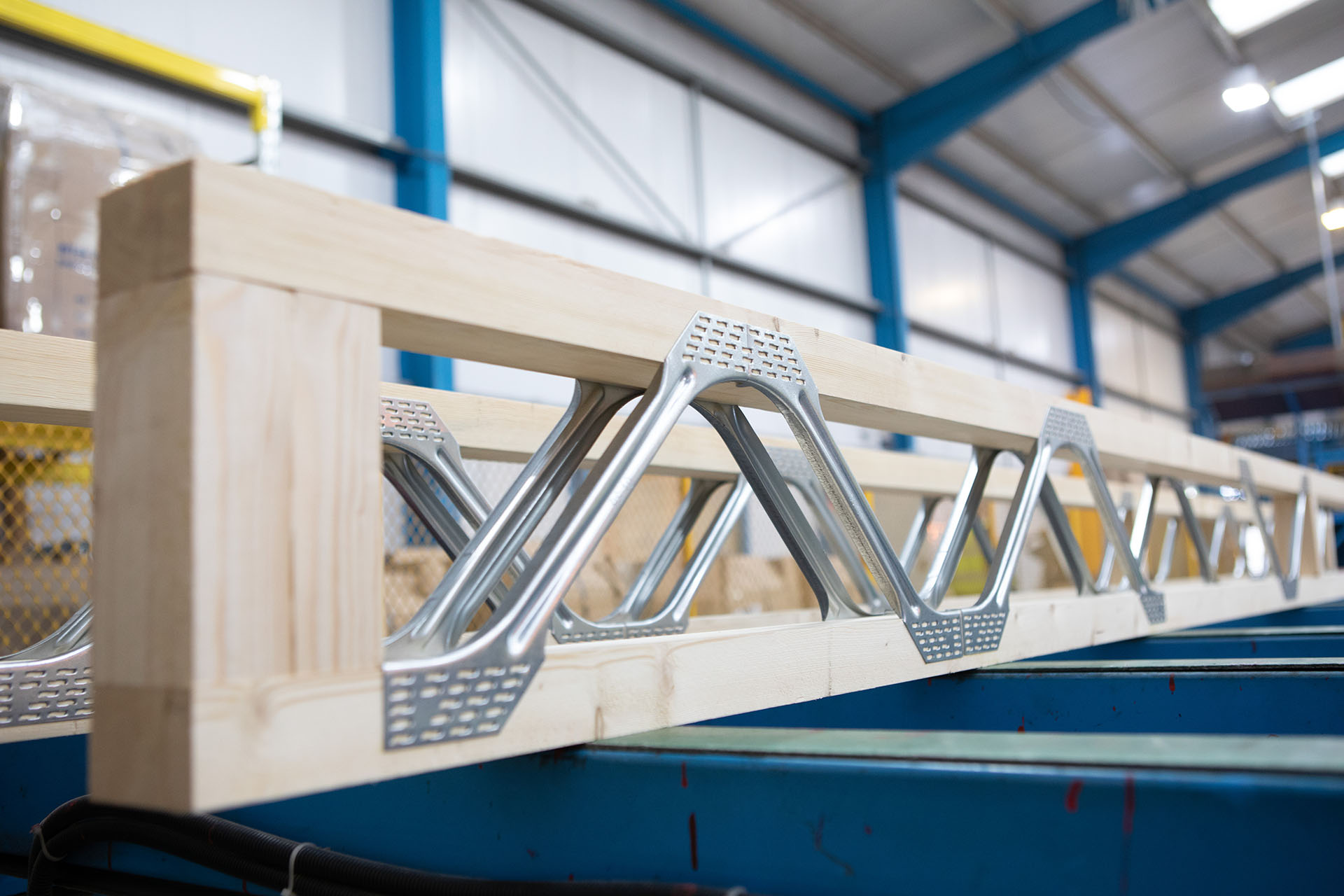A common discussion among the house building industry is around the differences between I-joist and metal web joists. In this article we will discuss this in relation to pricing. Posi joists are often used over I-joists due to their span capabilities and the ability to pass services through the metal webs without the need for drilling. We recently wrote about I-Joist pricing and we will compare this with posi joist pricing.
Posi joists, also known as metal web joists or open web joists, combine small timber section sizes with the strength of a steel web. They are used for a wide variety of projects but typically for timber frame housing developments or one-off self builds. Our designers have also noticed a trend recently that they are used more commonly for flat roofs or pitched roofs in commercial projects as well as in the floor zone. We design, manufacture and supply Mitek Posi-Joists using their Pamir Design Software.

Posi Joists vs I-joist prices:
Typically, metal joists are more expensive than I-Joists because they have to be manufactured using specialist equipment and to meet the customer’s specific requirements. I-joists are cut from pre-made stock lengths reducing the manufacturing and labour costs.
We have highlighted an example below to illustrate the price difference between posi joist prices and i-joist prices for a similar project.

I-Joist Pricing Example

Posi Joist Pricing Example
For these two similar dimensions for Standard domestic posi joists and standard domestic i-joists, the cost for posi joists is around 20% higher than i-joists.
We’ve outlined below a few important things to know in relation to posi joist prices and sizes.
Cost effectiveness:
Posi joists have an initially higher cost than I-joists because they are manufactured to order using specialist equipment to meet customers’ requirements. However, a metal web joist’s ability to span greater distances than I-joists, coupled with its open web provides many cost saving advantages. For example, the installation of services such as plumbing and electricity is far simpler and quicker with Posi-Joists, reducing both labour costs and build-up time on site. Metal web joists also reduced site wastage as they are precision-manufactured which almost eliminates the need for on-site alterations. The process is completed quicker, allow the next lift to start, and the customer makes worthwhile long-term savings despite the higher initial cost of the metal web joists.
Factors that affect the price of posi joists:
There’s a number of different factors that will affect the price of posi joists in the UK. One of the main ones is load applied to the joists.
Examples of loads applied are people, furniture etc.
Deflection, or the amount the posi joist will bend once loaded also plays a big part in the cost. Often, customers want to improve the produce of a Posi-Joist under load and restrict the bend that could occur to improve the overall performance, which can increase the overall cost.
The deeper the joist and similarly the larger the span, the more expensive it will be. However, if a deeper joist is used on a bigger span, the joist price will reduce against a shallow depth as the depth allows the joist to work with smaller timbers and less metal webs.
How to calculate how many posi joists you need for your floor project:
You may be wondering how to calculate how many joists you need for your next project, and if you are, we have the answers. The easiest and quickest way to find out is to use the instant quote function on our website. This allows you to input your desired joist span, depth and the centres you wish to space the joists at.
Here’s a reminder of what a metal web joist span and depth refer to:
Metal web joist Span: the overall length of the joist, including its bearing points (the walls they sit on)
Metal web joist Depth: how deep the joist is
If the options above don’t give you the desired result or if the internal room layout of your project requires some discussion with one of our experienced joist designers, please get in touch and we will work with you to find a solution for your project.